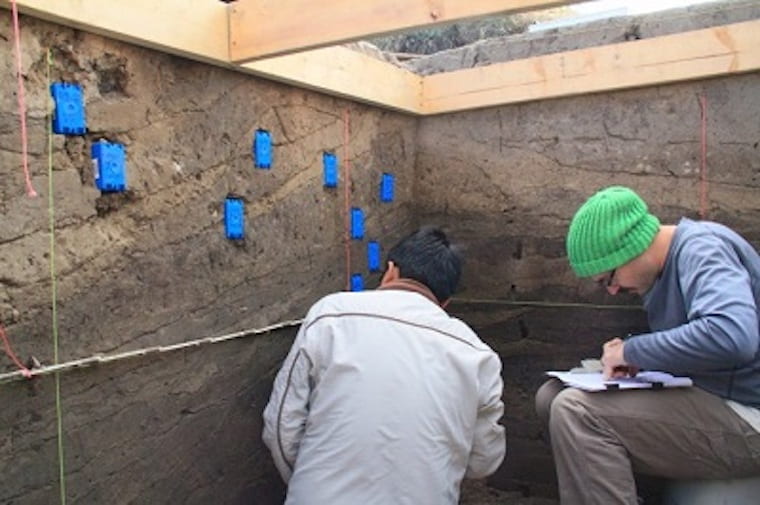Welcome to the Geoarchaeology Laboratory!
The Geoarchaeology Lab at Washington University provides students and professionals with opportunities to engage in interdisciplinary research within the fields of Anthropology, Environmental Sciences, and Earth Sciences. Lab personnel are investigating relationships between humans, their behavior, and the physical environment through the application of analytical techniques, concepts, and field methods drawn from the earth sciences and applied to archaeological problems. Lab components of research projects in the American Southeast and Midwest as well as in China involve studies of human and environmental processes involved in site formation, the sedimentary context of archaeological remains, soils and sediments relevant to archaeology, the relationship between past settlement and landscape evolution, paleoclimatic reconstruction, and human impacts on the environment. A variety of methods are employed in the lab to pursue our research goals, including conventional archaeological investigations, subsurface coring and trenching, sediment analyses (particle size, loss-on-ignition), soil/sediment chemical content assays, microartifact analysis, micromorphology, remote sensing, and GIS.
Every archaeological problem starts as a problem in geoarchaeology
-Colin Renfrew
Featured Research:

Geoarchaeology at Cahokia, Illinois
The Geoarchaeology Lab at Washington University in St. Louis is involved in ongoing research into the organization of the human built and modified landscape at Cahokia, a UNESCO World Heritage site east of St. Louis. In 2007 we undertook excavations on the east face of Monks Mound as part of a large-scale conservation effort.

Geoarchaeological research in Uzbekistan
The Malguzar Mountains in southeastern Uzbekistan are a key region for understanding the history and dispersal of mobile pastoralist populations in highland territories of Inner Asia, as well as how interactions between pastoral and agricultural societies have shaped Eurasia from the Bronze Age to the present.
Ancient Lessons for Modern Times: An Environmental History of the Yellow River, China, 5000-2000
by Dr. Tristram R. Kidder
Mid-County Branch, St. Louis County Library